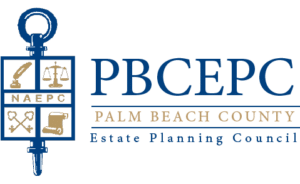
Making a charitable plan is often a large task that takes thoughtful preparation. Family members may have diverse perspectives and varied philanthropic priorities and interests, making the task more challenging. Here are five important questions families should ask themselves as they make charitable plans together.
1) Should we engage a professional advisor to start the conversation? While most advisors believe that discussions on family philanthropy are important, statistics show that as few as one-sixth of advisors initiate these discussions with their clients. Families with charitable objectives shouldn’t hesitate to open this important conversation.
Ultimately, it matters less who brings the focus to philanthropy, but rather that it is raised in a meaningful way early in the dialogue. Families should internally discuss what their philanthropic goals are so they can be brought to the attention of professional advisors at the beginning of a relationship. This, along with the clients’ personal and financial goals, community interests and activities, will help advisors understand the full scope of a family’s aspirations.
2) Should we involve the next generation? Families should take steps to involve children and grandchildren in their philanthropy. This can establish family traditions, personal values and promote cooperation among family members. Charitable planning can also be part of a wealth transfer plan between generations, so educating family members on the estate planning tools being used can lay the groundwork for the next generation of philanthropists.
Families should also be aware of generational differences in societal norms, technology, economics and culture which may create different interests among members of the five living generations—Traditionalists, Baby Boomers, Generation X, Millennials and Generation Z. Embracing and incorporating these perspectives into charitable planning can only strengthen multigenerational philanthropy.
3) Should we incorporate estate planning tools into our philanthropy? Sometimes the outright giving of cash or appreciated assets is the simplest and most expedient way for donors to make a lasting impact. However, families should consider planned gifts—those that incorporate financial or estate planning. This requires skilled examination of the family’s assets and giving goals to apply the right technique, which can create lasting philanthropic impact, as well as a tax benefit. Some planned giving options include partnering with a foundation or establishing charitable gift annuities, a donor advised fund or a split-interest charitable trust.
In our current low interest rate environment, the charitable lead trust (CLAT) is particularly attractive. These trusts operate for a set term, during which payments are made to one or more designated charitable beneficiaries. At the expiration of the trust term, the remainder of the trust is distributed to non-charitable beneficiaries (typically family members). The CLAT can provide income tax savings that are ultimately passed to the remainder beneficiaries and mitigate estate taxes, all while serving a charitable purpose during the trust’s term.
Establishing a relationship with a local foundation that has a mission in alignment with your family’s philanthropic goals can make planned giving easy. Foundation staff will match your interests with appropriate giving opportunities and manage all the work for you, providing regular updates on the impact of your gift, and allowing the family to be as involved or hands-off as they want to be.
4) What will be the impact of our family’s philanthropic efforts? An engaged donor is one who is invested in the impact of their philanthropy. When giving to a non-profit, for example, it’s important to assess the gift outcomes. Evidence of success offers both the donor and the non-profit the opportunity to attract other donors and expand the cause’s reach.
Family discussions should lay the bedrock for a dialogue with the non-profit that is ultimately accountable for making a tangible impact. Be sure to select an organization that is transparent in communication and provides regular impact reports on your giving.
5) Should our family’s giving be public or anonymous? Aside from recognition, giving publicly can lend credibility to a cause and perhaps encourage other donors to follow. On the other hand, one might feel that impact is best achieved if attention is focused on the cause rather than the donor. Anonymity also avoids any public scrutiny of the charitable gift. Many are simply more comfortable conducting their charitable activity with privacy, and the public recognition may feel more like a burden.
Whether to give publicly or anonymously is a very personal decision for which there is no right answer, and reasonings may vary significantly between families and circumstances. As a family, have an open conversation weighing the pros and cons before coming to a decision that suits you.
The most effective donors are those who are engaged in their philanthropy. These questions can guide family discussions, ignite engagement and ensure that the impact of your charitable giving is meaningful, rewarding and builds a lasting legacy.
Stephen Zaloom, J.D., LL.M., CAP® is a partner with the law firm of Jeck, Harris, Raynor and Jones, PA, where he advises clients on estate planning, probate and trust administration and charitable planning. He also serves on the board of trustees at Palm Health Foundation, a fundraising and grantmaking organization that exists to improve health in Palm Beach County.
